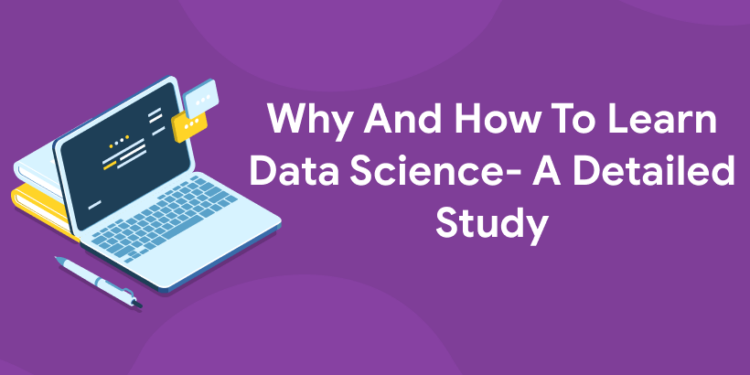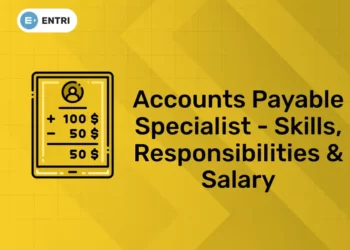Table of Contents
Data science has become one of the most sought-after skills in the modern business world, with more and more companies seeking out data scientists to take on projects that range from improving customer experience to building predictive analytics models and optimizing databases. Whether you’re looking to switch your career or branch into new industries and opportunities, learning data science can be one of the most rewarding skills you acquire in your lifetime. Learning data science can be difficult and overwhelming at first, but it doesn’t have to be. Follow these steps to get started learning how to use data science in your everyday life. Data science can be overwhelming, but there are many ways to learn the skills necessary to become a data scientist. This article will walk you through 10 steps on how to learn data science, including advice on picking an online course, researching topics, and finding career opportunities. If you follow these steps, you’ll be well on your way to becoming a data scientist in no time!
Step 1: Do You Have What It Takes?
It’s not easy to get into data science, but if you’re asking yourself whether you have what it takes to be a data scientist, you probably do. People with degrees in computer science and math dominate the field of data science, but there are other ways to break-in. The first step is figuring out what type of background best suits your skills and interests. What excites you about information technology? Is it using cutting-edge tools like big data frameworks? Is it building complex models for consumer behavior? Or is it more about making business processes more efficient with tech solutions? Once you figure out where your passion lies, research which industries might value those skills. For example, IT engineers who specialize in cloud computing may find themselves well suited for positions at Amazon or Microsoft. Meanwhile, software developers who build predictive models may find jobs at healthcare companies that need help analyzing large amounts of patient data. Regardless of where you start off, there’s one thing all aspiring data scientists should keep in mind: no matter how far along you think you are in your career path, don’t stop learning new things!
To know more about data science in the Entri app
Step 2: Take Your Time
Don’t rush it. While most people have day jobs, you need to make sure that you do your learning in a structured way. Give yourself enough time to learn it well and be certain that you don’t gloss over any aspects of it. You can also take up a course or schedule a few workshops as part of your professional development. This will give you an additional perspective while making sure that all of your bases are covered. If you feel like some parts are going too slowly, try to find resources online (videos, articles) or go for paid courses and try doing those in parallel with your regular learning sessions. The important thing is not to let your learning suffer because of other commitments. The faster you get through these steps, the better off you’ll be! Once you’ve mastered data science, you won’t regret spending extra time now. However, if you just rush it, you might end up frustrated later when things start getting tough. As long as you keep that in mind, there should be no problems at all. Just stick to your study plan and trust that everything will work out in due time. In fact, if you stick to what we tell you here, we promise it will! The more experience one has working with computers, web design or software applications such as Microsoft Office products and Adobe Photoshop; JavaScript; Python; R programming language; PHP programming language; HTML5/CSS3 Web Design; Java programming language; C++ programming language or Objective-C iOS apps, etc., the easier their job search process becomes.
start career in data science ! 100% placement assistance !
Step 3: Get Some Basic Tools
Python is one of many languages used for data science. It’s powerful, open-source, and free to download. Anaconda is a collection of over 400 packages commonly used in data science (e.g., machine learning algorithms) that simplifies installation and usage issues. If you’re not sure where to start, check out a local Python user group or online communities like PyData. org. You can also find helpful tutorials and videos from organizations such as O’Reilly Media and Coursera. There are also great books available for beginners, including Think Stats by Allen B. Downey and Python for Data Analysis by Wes McKinney. Both are freely available online under Creative Commons licenses. Don’t be intimidated by all these options—start with what makes sense to you. The important thing is just getting started! Once you’ve completed your first project, try building something else. As you gain more experience, go back and review some basics to solidify your understanding. For example, if you’ve been using Python but aren’t comfortable with functions yet, go back and brush up on them before moving forward. That way when you come across new concepts they’ll make more sense in context because they’ll build upon what you already know.
Are you aspiring for a booming career in IT? If YES, then dive in |
||
Full Stack Developer Course |
Python Programming Course |
Data Science and Machine Learning Course |
Step 4: Understand The Basics Of Data Science
In order to learn data science, you need to first understand what it is and what it’s not. In some ways, data science is just a fancy name for using your favorite tools to find insights into large sets of data. It’s also much more than that. A true data scientist can use computer programming languages to help them ask questions and draw conclusions about an important subject. While you don’t need a programming background, it can certainly help! Once you’re done with step 4, read Step 5 below! (link to the previous post) Learning how to code isn’t necessary to get started as a data scientist, but it can be helpful. Since programmers are good at asking complex questions with code, they tend to be able to quickly and thoroughly approach problems. If you already know how to code or plan on learning how soon after starting your data science education, then check out these free online coding courses: Python For Everybody by the University of Michigan; Intro To Computer Science by Harvard University; and Machine Learning by MIT Open Courseware.
Step 5: Learn R, Python, or SAS
There are various options out there for beginning data scientists, including R, Python, and SAS. From a practical standpoint, you’ll want to choose one of these programming languages since all of them provide some form of input for data. The specific learning curve for each language depends heavily on your past experience with code; so if you have coding experience, then learning one of these is simple. For beginners though—even those with an economics or math background—these languages can be difficult to pick up. A great way to get started is by signing up for a class at an online school like Coursera or edX. If you don’t want to sign up for a course just yet, you can still learn how to use R in conjunction with Excel using tutorials from sites like Udemy. If you already know how to program in another language (like Java), then learning R will come easier because it is built off of other popular programming languages. Regardless of which language you decide on, make sure that it works well with Excel (or whichever software package your company uses). Some programs might not interact seamlessly with spreadsheets and could cause problems down the line when trying to run reports. This is especially true if your employer doesn’t support open-source software.
Step 6: Practice Machine Learning Algorithms
Mastering machine learning algorithms is critical to becoming a data scientist. There are many resources available to learn these algorithms, including books, websites, and MOOCs. Although it’s not required, you should practice as much as possible so that you can develop your own coding style and easily recognize mistakes or errors in your work. Practice will also help you recognize common issues such as computational time and the overfitting of models. If you want to take things one step further, try implementing some of these algorithms from scratch. This way, you’ll gain an even deeper understanding of how they work and how they can be applied to real-world problems. In addition, programming through trial and error allows you to develop intuition about which methods might be most effective for different types of datasets. When I was studying for my OMSCS degree at Georgia Tech, I implemented my own versions of all ten projects from Machine Learning by Tom Mitchell on my own (without looking at his solutions). It was very challenging but gave me a lot more insight into each project than if I had just used his solution code.
Step 7. Understand Data Visualization Techniques
Learning how to visualize data is just as important as being able to analyze it. After all, that’s how humans interpret information! There are many different techniques for visualizing data, but keep in mind that not all visuals are created equal. In some cases, a table might be more appropriate for your needs than a bar graph or pie chart (or vice versa). Make sure you understand your options and use visuals that convey your message most effectively. If you aren’t sure what visualization works best for your data, spend time researching until you find one that makes sense. You can also try asking someone else if they have any suggestions. Maybe there’s an easier way to present your findings than what you had originally planned. Either way, don’t assume that one type of visualization will work best—test them out yourself! Here are some examples of ways people have used data visualizations: Maps: Showing where something is happening helps put it into context. With maps, we can see locations in relation to each other. For example, let’s say we want to show where our target audience lives compared with where our product/service is available. Maps allow us to compare both sets of data visually instead of having two columns side by side in a spreadsheet or table.
Step 8. Master Statistics Concepts In Data Science
Before going ahead with Machine Learning and Deep Learning, make sure you understand statistics. Statistics deal with distributions and data sets. The most important statistical concepts in data science are probability, inference, hypothesis testing, sampling methods, and population size estimation. Some of these concepts include Probability distributions: Binomial distribution: Is used to describe discrete random variables that can take only a fixed number of values (typically two) such as heads or tails in coin tosses. Geometric distribution: It is used to describe discrete random variables which take a non-negative integer value at each possible outcome with a specified probability for each value. For example, if we flip a fair coin times then the geometric distribution would be applicable. Uniform Distribution: It is used to describe continuous random variables where all outcomes are equally likely and each value has an equal chance of occurring. A good example would be measuring the heights of adult males between the ages of 20–and 30 years old in some countries where males from all over the country were measured.
Enroll in our latest data science program in the Entri app
Step 9. Know The Business Intelligence Tools In Detail
When you have a clear idea of how data science will change your business, it’s time, to be honest with yourself. You don’t need an in-depth knowledge of tools that would help you get insights from your data set. You can just focus on what matters for your business and select tools based on that criteria. If you don’t need to hire full-time professionals for big projects, then free or cheap business intelligence software will do just fine. However, if you are willing to spend some money and need a professional solution, BigML is definitely worth considering as a viable option for most businesses. It is not only easy to use but also offers many useful features that are suitable for big projects too (such as Bayesian analysis). But even if you want to try out other solutions, such as Microsoft Power BI or Tableau Public, keep in mind that they all provide free versions. So why not give them a try?
get certified in python ! enroll for free demo video !
Step 10. Choose One Course and Stick With It.
Although there are several data science courses out there, it is important to find one that fits your style and personality. There are a lot of online resources that teach data science. You may check Coursera, EdX, Udacity, or even connect with some professors in your college who teach classes you may be interested in pursuing. Once you’ve selected a course or two, stick with it as much as possible. Make sure you follow their curriculums closely and do all homework and projects assigned. Most courses consist of four parts: videos (lectures), exercises (homework), assessments (quizzes), and exams (final project). Follow each part diligently so you can learn at an optimal rate and eventually pass their final exam with flying colors! When learning something new, always remember to ask questions if you don’t understand something; your instructor will be happy to help. Also, make sure you take notes when watching lectures or reading textbooks so you can refer back later when needed. Learning is a long process but will ultimately make things easier for future jobs and career paths.
Be patient! Learning how to become a data scientist takes time but keep pushing forward and before long you will succeed! It has been said Rome wasn’t built in a day. So if Rome wasn’t built in a day then neither will becoming a Data Scientist take place overnight either – especially since most people struggle with building meaningful careers anyways – whether it’s IT-related or not. If you are interested to learn new coding skills, the Entri app will help you to acquire them very easily. Entri app is following a structural study plan so that the students can learn very easily. If you don’t have a coding background, it won’t be any problem. You can download the Entri app from the google play store and enroll in your favorite course.
Enroll in our latest data science program in the Entri app
| Our Other Courses | ||
| MEP Course | Quantity Surveying Course | Montessori Teachers Training Course |
| Performance Marketing Course | Practical Accounting Course | Yoga Teachers Training Course |











